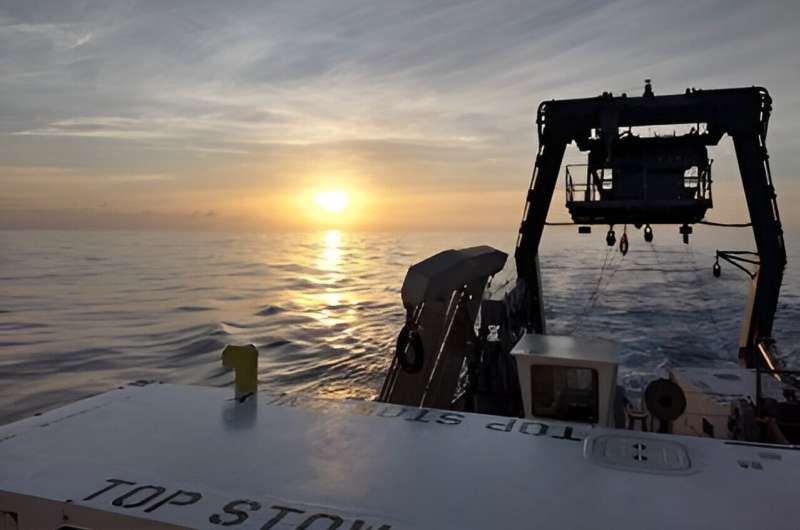This article has been reviewed according to Science X's editorial process and policies. Editors have highlighted the following attributes while ensuring the content's credibility:
fact-checked
peer-reviewed publication
trusted source
proofread
New analytical tools identify distinct components of dissolved organic matter within the ocean water column

Large quantities of carbon are stored across the environment as naturally-occurring dissolved organic matter. In the ocean, this organic carbon has an average age of thousands of years, but seasonal fluctuations in dissolved organic matter concentrations in the surface ocean imply that some dissolved organic matter is produced and degraded far more rapidly.
The reason some fraction of organic carbon persists longer than others has long remained unknown. Using new analytical tools built by the Environmental Molecular Sciences Laboratory (EMSL), a multi-institutional team of researchers identified distinct components of dissolved organic matter (DOM) with different molecular compositions that underpin their persistence.
Their study is published in Environmental Science & Technology.
The surface ocean takes up roughly a third of the carbon dioxide that is produced by fossil fuel burning, and much of this carbon is transferred into the ocean's interior as particulate and dissolved organic carbon. However, the controls over this process remain poorly understood.
The study sheds light on the origins and ultimate fate of this organic carbon by resolving distinct components that cycle at different rates. Such information is crucial for making more accurate predictions about future changes in carbon sequestration.
DOM contains a complex mixture of small molecules that elude rapid biological degradation. Spatial and temporal variations in the abundance of DOM reflect the existence of fractions that are removed from the ocean over different timescales, ranging from seconds to millennia. However, it remains unknown whether the intrinsic chemical properties of these organic components relate to their persistence.
The research team investigated this question by comparing the molecular makeup of different DOM types with different lifespans from a water column in the North Atlantic Gyre.
The analysis used ultrahigh-resolution 21 Tesla Fourier transform ion cyclotron resonance mass spectrometry coupled to liquid chromatography, plus, leveraging EMSL's CoreMS software, a novel data pipeline developed at EMSL that generates molecular formula assignments and metrics of isomeric complexity.
This analysis enabled the team to group distinct molecular components with different labilities. The more labile fractions were concentrated near the ocean surface and contained more aliphatic, hydrophobic, and reduced molecules than the refractory fraction, which occurred uniformly throughout the water column.
These findings suggest that processes that selectively remove compounds by aggregation and particle sorption might explain why some types of DOM disappear from the ocean faster than others.
More information: Rene M. Boiteau et al, Relating Molecular Properties to the Persistence of Marine Dissolved Organic Matter with Liquid Chromatography–Ultrahigh-Resolution Mass Spectrometry, Environmental Science & Technology (2024). DOI: 10.1021/acs.est.3c08245
Journal information: Environmental Science & Technology
Provided by Environmental Molecular Sciences Laboratory


















